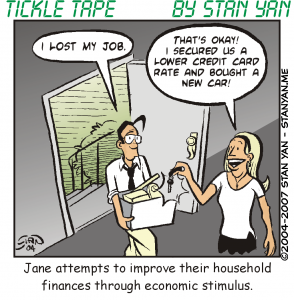Many novice traders were successful in other professions before embarking on a trading career. Since they were successful in their previous occupational goals, they approach trading in much the same way, but trading is a little different. And it is useful to be aware of how it is different. With a few exceptions, most professions are taught with traditional methods.
One attends classes, reads books and learns about theoretical ideas through the examination of hypothetical case studies. But when it comes to trading, it isn’t that easy. Case studies often fail to capture the complexity of the markets and their tenuous nature. In the end, mastering the markets requires a hands-on approach. You must learn on your own. You may learn a few techniques by attending classes or reading a few trading books, but in the final analysis, you must learn through experience. You must figure out on your own which techniques work for you and which ones do not.
The possible list of trading techniques is endless. You may be tempted to study them all, hoping that if you had a comprehensive knowledge, you could profit from any set of market conditions. It is an impossible goal, however. There are just too many. It is more useful to pick a few, try them out and see if they work. But even this task is easier said than done. First, some people out there are trying to sell you on techniques that just don’t work. In addition, techniques may become obsolete.
In many of our interviews with traders, for example, we found that traders who had made profits during the bull market that ended in 2000 could make no profits after the bubble burst. In other words, the techniques that once worked under bull market conditions no longer worked. For example, momentum indicators may have worked great during the bull market but may have less utility under subsequent market conditions. So there are two forces working against you; the trading knowledge out there is a mix of valid information and outright misinformation.
And even when you find valid information, it may be limited to specific market conditions. It is useful to remember familiar adages: So-called conventional wisdom is only right when it is and the markets behave according to a fixed set of principles only when it does. The rest of the time, conventional wisdom is wrong and the markets are completely chaotic. That’s why you must gain your own experience and decide for yourself what works. It is useful to cultivate a sense of healthy scepticism. Don’t believe anything you hear, but realize that some of what you hear may be valid. Unfortunately, it is up to you to decide which information has veracity and which information does not.
How do you go about testing methods? It isn’t a good idea to conduct your informal “studies” without managing risk. It is vital for your survival to limit your risk so that a string of losing trades won’t wipe out your account. It is also useful to remember that even a valid trading strategy with a high probability of success can fail. It is much like flipping a coin. If you flip a coin an infinite number of times, it should come up heads 50% of the time. There is a good chance, however, that if you flip it a mere 100 times, it will come up tails every time. Should you hit upon a run of “bad” luck, you could blow out your account if you don’t control risk. What you can do is devote a fixed amount of capital to a method, such as 20% of your account. Once that amount is used up, with no success, you should just abandon the method and try another one.
On the one hand, you want to give the strategy a chance to work. If you move back and forth from one method to another, you won’t put on enough trades to allow the law of averages to work in your favour. But on the other hand, you don’t want to waste too much capital on a strategy that has no chance of working (either because it just doesn’t work or because current market conditions are not conducive to the trading strategy). It is important to remember that markets change. Sometimes methods that worked in the past no longer work anymore. If you can figure out why a method isn’t working and tweak it until it works, then that’s great. But if you can’t get it to work, it is best to just let it go, move on, and try something else.
Trading requires a curiosity about the markets. You have to have the temperament of an explorer, ready to take risks, and excited by the process of discovery. You must try out trading strategies on your own, and use your own judgment to determine what works and what does not. There is no substitute for experience. Through the process of trial and error, you can discover the strategies that will help you achieve lasting success.


